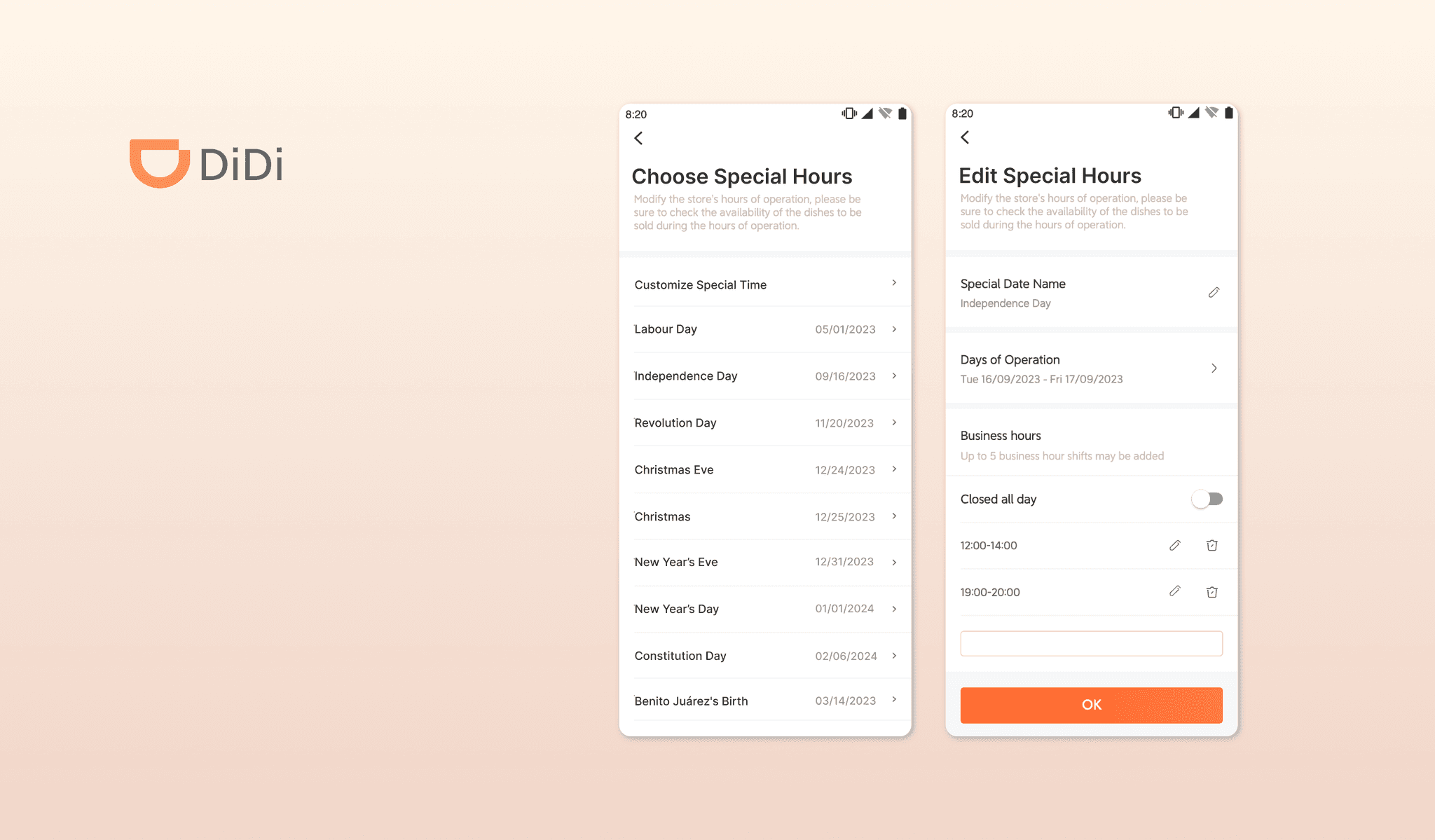
Optimize the online order-taking process for merchants.
Food Delivery Merchants | E-Commerce | Data-driven
Duration
August - September 2023, 3 Weeks
Team
Worked with PMs, Engineers, and operators.
Contributions
Research, Ideation, Prototyping, Testing, Designing.
Status
Launched 🚀
Overview
Context
DiDi Food operates as an international food delivery service. I was part of the group targeting vendors across South America. Our primary competors include Uber Eats and Doordash.
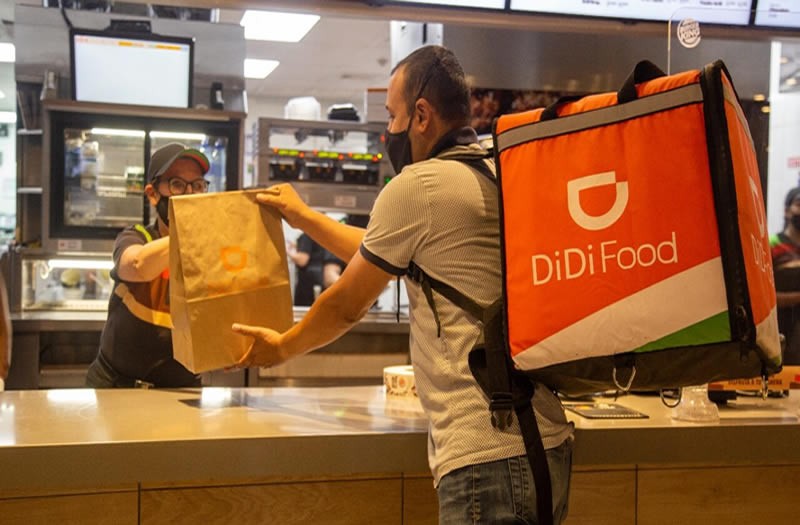
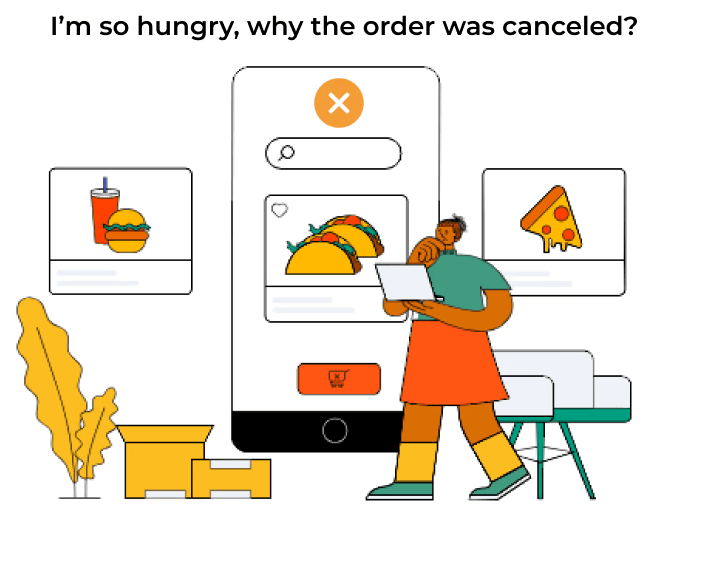
Business Objectives
The company aimed to reduce the number of orders canceled by merchants.
Because customers who have ordered and waited for their food only to find it canceled have a disappointing experience, which might cause the platform to lose both customers and revenue.
What are the benefits for merchants?
📈
Increase Sales and Revenue
Fewer canceled orders mean more completed transactions.
😊
Improve Customer Satisfaction
It will encourage repeat business and positive reviews.
💪
Enhance Reliable Reputation
Attract new customers and strengthen trust in their brand.
Metrics
Business Metric
Business cancellation rate = Orders not canceled by customers / All canceled orders
UX Metric
Help the merchants receive orders easily and efficiently
Results
We reduced the Business cancellation rate in 3 countries from 3.69% to 2.45% in two months and provided merchants with a more convenient order-taking experience.
Research
Why do merchants choose to cancel orders?
I read reports from workshops with merchants to understand the order-taking process. And I brainstormed ideas to identify potential directions.
The item is out of stock
Low willingness to accept orders
Too many orders during peak periods
The order taker is late and leaves early
App is not running in the front of the system
No aware of any order
The status is online but the kitchen is not ready

Constraints
We are unable to conduct user interviews with merchants due to several reasons and language barriers.

Data Analysis and prioritization
I conducted data analysis to identify the problem and prioritize the issues.
Finding #1 Systematic cancellation more than cancellation by the merchant
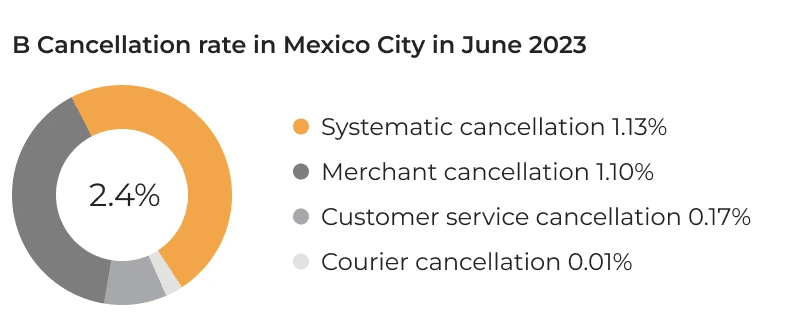
I prioritized the use case where users are willing to receive the order but miss it without being aware, rather than the case where they cancel the order themselves.
Finding #2 A significant increase in the cancellation rate during holidays

Design Challenge
How might we assist merchants in receiving orders before they timeout?
How do merchants receive online orders?
A sound alert will notify merchants when new orders arrive. The orders will then be displayed on the screen, requiring merchants to confirm them within 5 minutes.
Design
Part I — Auto-accept Option
Problem
I discovered that only 16% of merchants have enabled the auto-accept option, while competitors have adoption rates around 70%. To address this gap, I proposed using a popover reminder to encourage merchants to enable auto-accept for more efficient order handling.
Benefits
✅ Reduce the systematic cancellation rates
✅ Closing the gap with competitors
✅ Monitoring how merchants react to the reminder can provide insights into why adoption is low and how to refine the strategy.
Risks
⚠️ Popovers can be annoying
⚠️ Cancellations happen after accepting orders
Solution
Push popovers and track data in a small-scale trial.
Meeting with PM
The PM preferred version 1 due to its higher conversion potential, but I chose version 3 because emphasizing potential earnings creates a more positive user experience than highlighting losses. In the end, we reached a compromise with version 2, which strikes a balance between both perspectives.
Version 1 Strong Reminder
Version 3 Gentle Reminder
Part II — Voice Alert
Problem
I found that the product lacks a volume control for voice alerts in the settings, causing it to default to the system volume. When users lower the system volume while navigating away, the reduced volume remains when they return.
Meeting with the product team
I met with the product team and learned that they had received multiple user complaints about the voice alert. I proposed allowing users to adjust the volume within the product settings, as it is a low-cost change with high impact.

Merchant
"I use multiple online delivery apps to receive orders, but DiDi's alert sound is quieter than the others, making it hard to notice incoming orders."
Solution
Merchants were enabled to adjust the volume directly within the product settings.
Meeting with engineers
After speaking with engineers, I learned that both of them are feasible and I selected version because it is more intuitive and ensures the merchant knows exactly what to expect.
Version 1
Users are able to click the button to test the sound volume.
Version 2 (Selected)
When users slide the bar and release, the test audio will play automatically.
Part III — Special Hours Settings
Problem
I discovered that merchants have to manually remember and set their holiday business hours. This can lead to overlooked important days and increased cognitive load.
Solution
I added a list of upcoming holidays for users to choose from and enabled them to name special days, making it easier to remember and reducing the likelihood of forgetting.
After
Usability testing
Because the new design requires more actions from customers, we conducted a brief usability test to understand how merchants perceive it.
They found it helpful and suggested adding features that would allow them to quickly set special hours for upcoming days.
Conclusion
Results
Successfully reduced B cancellation rate and optimized order-taking experience.
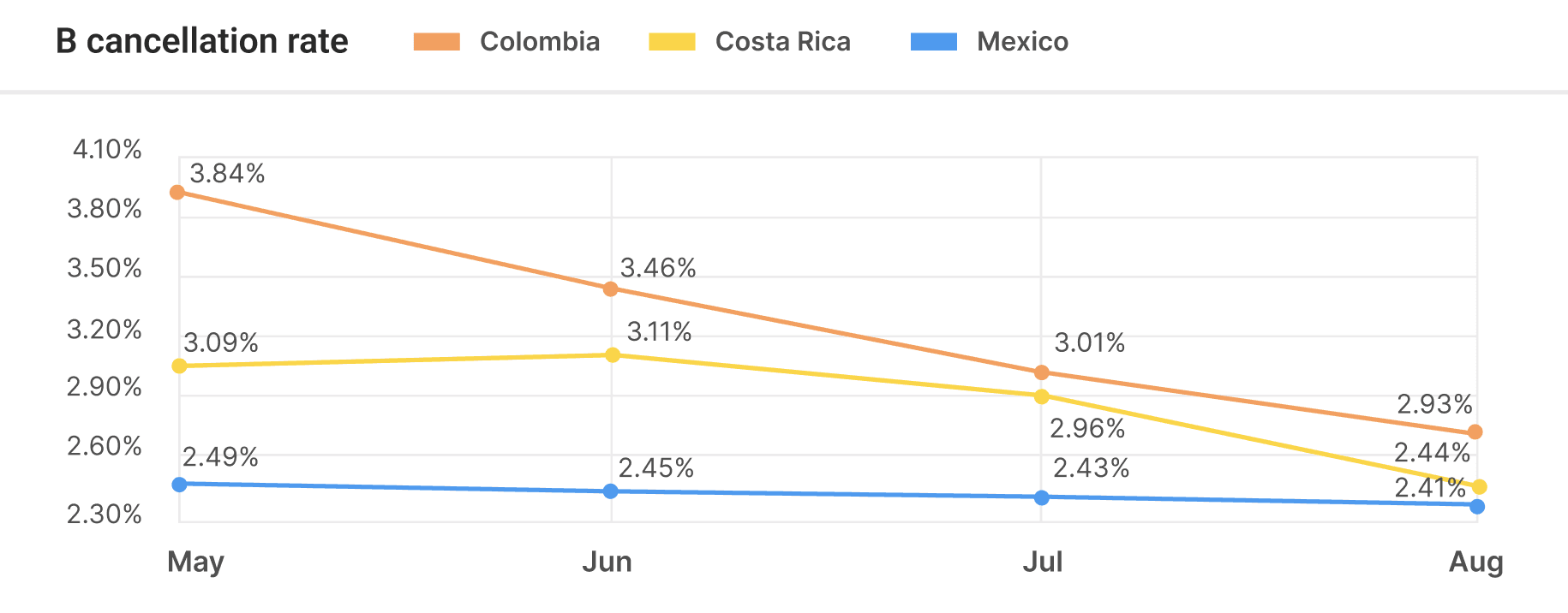
Next steps to reduce Business Cancellation Rate
Enable merchants to identify and report sold-out items in a timely manner, preventing customers from placing orders for out-of-stock products.
Enable merchants to set various business statuses, for instance, if they're busy during peak hours, we could minimize their appearance frequency on customer devices.
My takeaway
Identifying problems is just as crucial as finding solutions. Without a thorough understanding of the underlying issues, it’s challenging to develop effective solutions that address the needs of users.
There are various approaches to solving a problem, and each one may have its own set of benefits and challenges. It’s essential to evaluate these options and prioritize the most critical issues to ensure that efforts are focused on the most impactful solutions.












